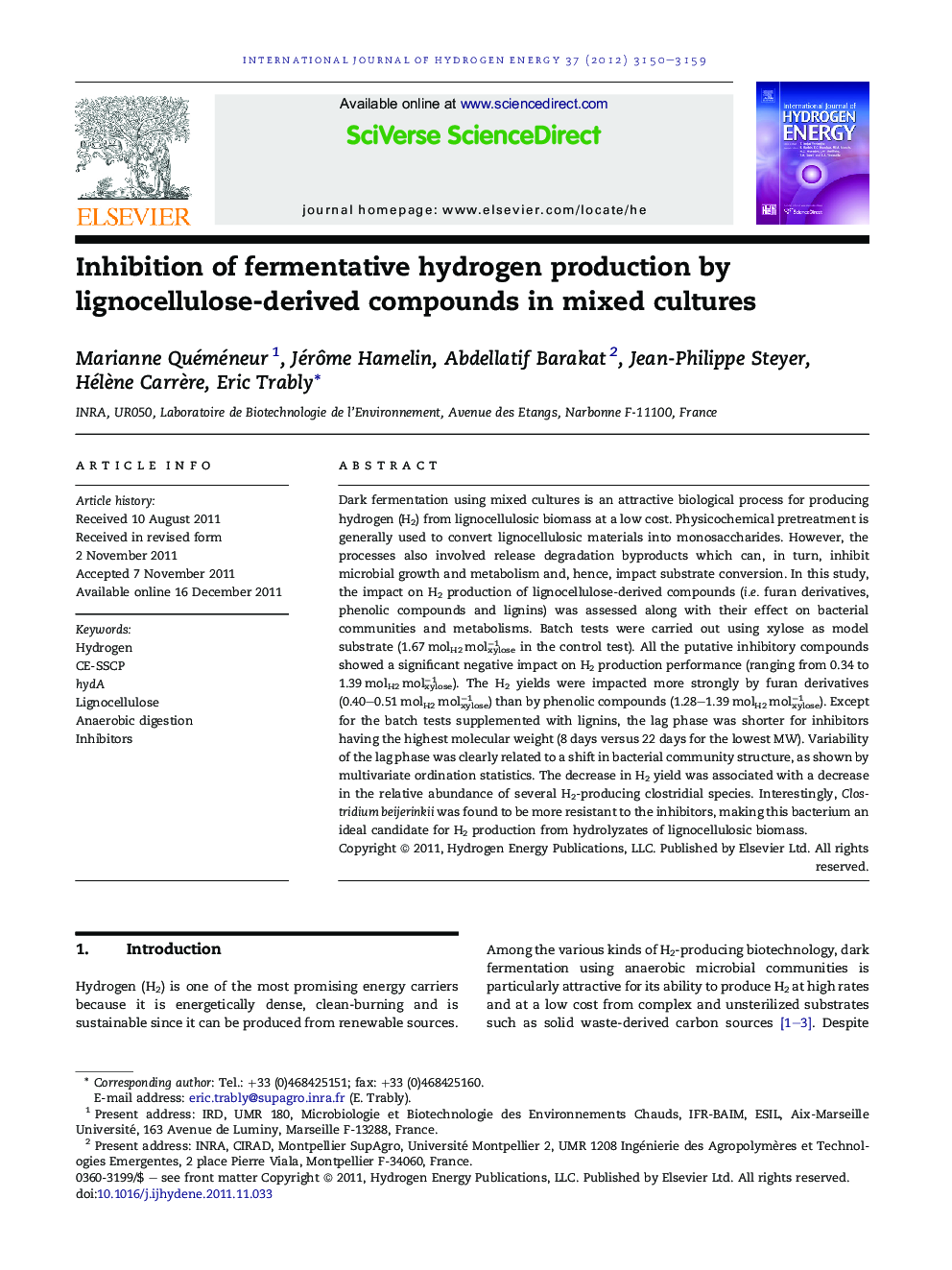| Article ID | Journal | Published Year | Pages | File Type |
|---|---|---|---|---|
| 1282319 | International Journal of Hydrogen Energy | 2012 | 10 Pages |
Dark fermentation using mixed cultures is an attractive biological process for producing hydrogen (H2) from lignocellulosic biomass at a low cost. Physicochemical pretreatment is generally used to convert lignocellulosic materials into monosaccharides. However, the processes also involved release degradation byproducts which can, in turn, inhibit microbial growth and metabolism and, hence, impact substrate conversion. In this study, the impact on H2 production of lignocellulose-derived compounds (i.e. furan derivatives, phenolic compounds and lignins) was assessed along with their effect on bacterial communities and metabolisms. Batch tests were carried out using xylose as model substrate (1.67 molH2 molxylose−1 in the control test). All the putative inhibitory compounds showed a significant negative impact on H2 production performance (ranging from 0.34 to 1.39 molH2 molxylose−1). The H2 yields were impacted more strongly by furan derivatives (0.40–0.51 molH2 molxylose−1) than by phenolic compounds (1.28–1.39 molH2 molxylose−1). Except for the batch tests supplemented with lignins, the lag phase was shorter for inhibitors having the highest molecular weight (8 days versus 22 days for the lowest MW). Variability of the lag phase was clearly related to a shift in bacterial community structure, as shown by multivariate ordination statistics. The decrease in H2 yield was associated with a decrease in the relative abundance of several H2-producing clostridial species. Interestingly, Clostridium beijerinkii was found to be more resistant to the inhibitors, making this bacterium an ideal candidate for H2 production from hydrolyzates of lignocellulosic biomass.
► Lignocellulosic-derived compounds inhibited H2 production performances of mixed cultures. ► The H2 yields were more impacted by furan derivatives than phenolic compounds. ► The lag-phase time was negatively correlated to molecular mass of inhibitors. ► H2 production was related to different clostridial species and metabolic routes.
